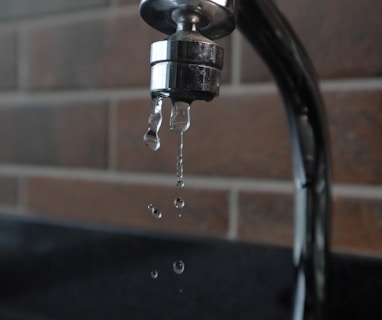Sustainable Water Management: Everything You Need to Know
Sustainable water management is the practice of using water resources in a way that meets the needs of the present without compromising the ability of future generations to meet their own needs. This blog post provides a comprehensive guide to sustainable water management, covering everything from the basics to the latest research and technologies.
8/21/20233 min read


Introduction
Water is essential for life. We need water to drink, cook, bathe, grow food, and generate electricity. However, our water resources are under threat. Climate change is causing more extreme weather events, such as droughts and floods, which are depleting our water supplies.
We need to practice sustainable water management to ensure that we have enough water for the future. Sustainable water management is the practice of using water resources in a way that meets the needs of the present without compromising the ability of future generations to meet their own needs.
There are many things we can do to practice sustainable water management. Here are some of the most important:
Reduce our water consumption: This is the most important thing we can do to conserve water. We can reduce our water consumption by taking shorter showers, fixing leaky faucets, and watering our lawns less often.
Conserve water: When we do need to use water, we should conserve it by using it wisely. For example, we should turn off the faucet when we brush our teeth and wash our dishes.
Recycle and reuse water: We can recycle and reuse water by collecting rainwater for irrigation or using graywater (water from showers and sinks) to flush toilets.
Invest in water-efficient technologies: There are many water-efficient technologies available, such as low-flow toilets and showerheads. We can invest in these technologies to help us conserve water.
Get involved in our community: We can get involved in our community to support sustainable water management initiatives. This could involve volunteering for a local water conservation organization or advocating for water-saving policies.
By practicing sustainable water management, we can help to ensure that we have enough water for the future.
Green Goods Guide
In addition to following the tips above, we can also help to conserve water by choosing green goods. Green goods are products that are made with recycled materials or that are water-efficient. Here are some examples of green goods:
Reusable water bottles: Reusable water bottles are a great way to reduce our reliance on single-use plastic bottles.
Water-efficient appliances: Water-efficient appliances use less water than traditional appliances.
Rainwater harvesting systems: Rainwater harvesting systems collect rainwater for use in irrigation or other purposes.
Graywater systems: Graywater systems collect water from showers and sinks for use in flushing toilets or watering plants.
WaterSense labelled products: The WaterSense label is a water conservation label that is awarded to products that meet strict water efficiency standards. When we buy WaterSense labeled products, we can be sure that we are choosing products that help to conserve water.
Here are some statistics and data from India and around the world regarding sustainable water management:
India
India is the world's second most populous country and has a population of over 1.3 billion people.
India is also one of the most water-stressed countries in the world.
Only 4% of India's water is available for human use, and this is expected to decrease to 3% by 2050.
The main causes of water scarcity in India are climate change, population growth, and over-exploitation of water resources.
India is taking steps to address water scarcity, such as rainwater harvesting, water conservation, and water recycling.
Worldwide
According to the World Bank, by 2025, two-thirds of the world's population will be living in water-stressed areas.
The Middle East and North Africa are the most water-stressed regions in the world, followed by South Asia and sub-Saharan Africa.
Climate change is expected to exacerbate water scarcity in many parts of the world.
There are a number of things that can be done to address water scarcity, such as rainwater harvesting, water conservation, and water recycling.
Here are some specific examples of sustainable water management practices from India and around the world:
India
The state of Kerala has been a pioneer in rainwater harvesting. Over 90% of the state's households have rainwater harvesting systems.
The city of Ahmedabad has implemented a water conservation program that has reduced water consumption by 30%.
The state of Maharashtra is developing a water recycling program that will recycle wastewater for irrigation.
Around the world
Israel is a leader in water conservation. The country has developed a number of innovative water-saving technologies, such as drip irrigation and water recycling.
Singapore is another country that has made significant progress in water conservation. The country has reduced its water consumption by 40% since 1990.
The United States is investing in water infrastructure projects to improve water efficiency and reduce water waste.
These are just a few examples of the many sustainable water management practices that are being implemented around the world. By working together, we can address the challenge of water scarcity and ensure that everyone has access to clean water.
By choosing green goods, we can help to conserve water and protect our environment.
Related SEO Keywords:
sustainable water management
water conservation
water efficiency
green goods
recycled materials
water-efficient appliances
rainwater harvesting
graywater systems
WaterSense
We hope this blog post has helped you learn more about sustainable water management and how you can help.
